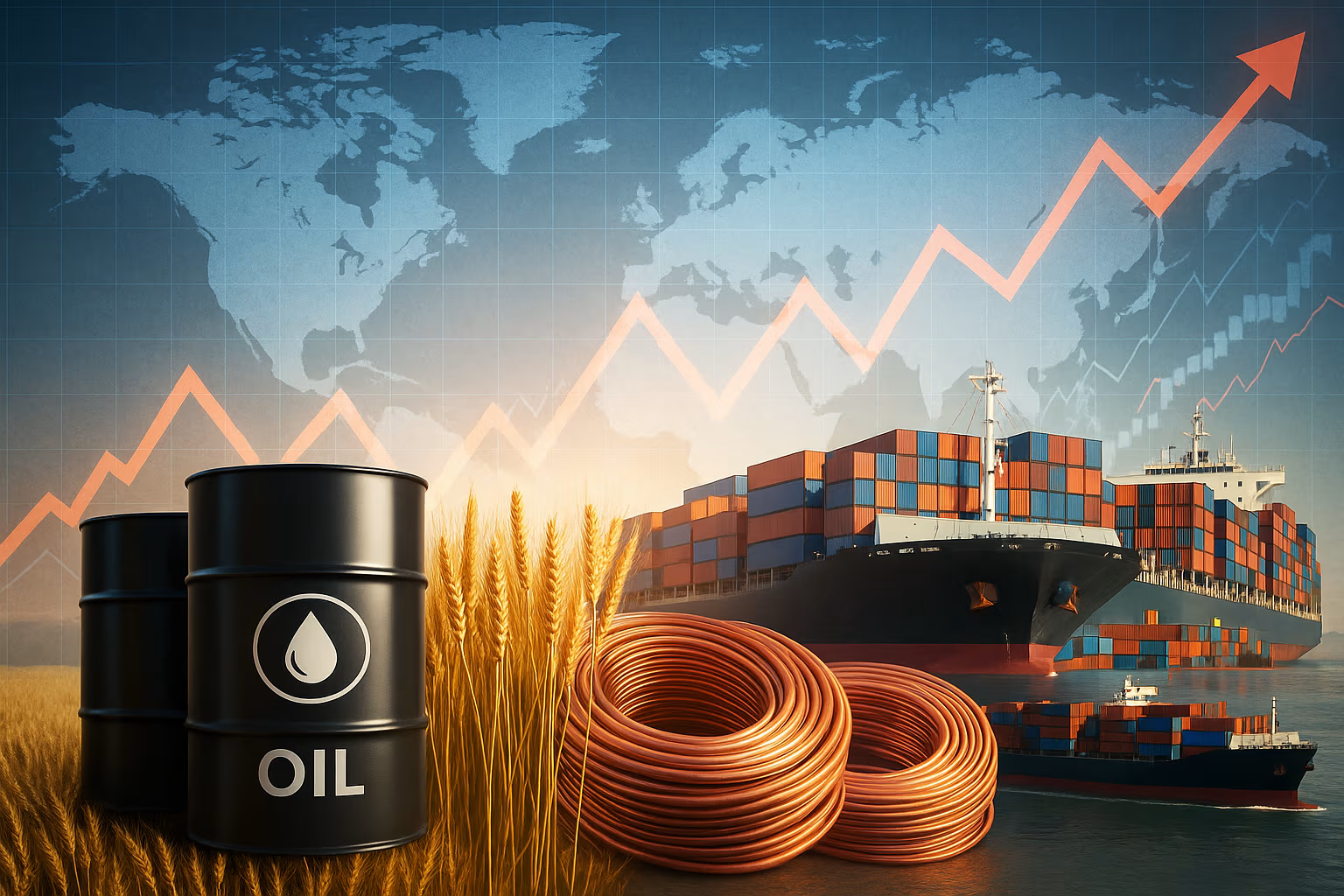Commodity markets are staging a strong rebound as growing supply concerns ripple through global trade networks. From energy and metals to agricultural products, prices have risen in recent weeks amid geopolitical tensions, extreme weather events, and logistical disruptions that threaten to tighten availability.
The rally reflects a renewed focus on resource security and inflationary pressures, with investors, producers, and governments all adjusting strategies to navigate a more volatile commodities landscape.
Energy Prices Lead the Upswing
Oil and natural gas prices have been at the forefront of the rebound. Crude futures climbed as geopolitical risks in key producing regions heightened concerns over output stability, while OPEC+ maintained a cautious approach to production increases.
In Europe, natural gas markets remain sensitive to supply disruptions linked to both geopolitical events and seasonal demand spikes. Analysts note that any unexpected cold weather or pipeline interruption could send prices higher, underscoring the fragility of current supply chains.
Agricultural Commodities Under Pressure
Agricultural markets are also feeling the pinch. Prolonged droughts in South America have hit soybean and corn yields, while unseasonal floods in Asia have disrupted rice production. Global wheat supply remains vulnerable as export restrictions and shipping delays continue to impact delivery schedules.
Food inflation is now back in the spotlight, with higher prices for grains, coffee, and sugar raising concerns for emerging economies where household budgets are more sensitive to staple costs.
Metals and Minerals See Renewed Strength
Industrial metals have also benefited from supply-side tightness. Copper prices, in particular, have rebounded on fears of mine disruptions in Latin America and Africa, coupled with steady demand from the renewable energy and electric vehicle sectors.
Aluminum and nickel markets are facing similar constraints, with production costs rising due to higher energy prices and environmental regulations limiting output in certain regions.
Supply Chain Vulnerabilities Persist
The recent commodity rally underscores the structural vulnerabilities in global supply chains. Just-in-time inventory models, while efficient in stable times, are proving ill-suited to a world where disruptions have become more frequent and prolonged.
Logistical challenges, from port congestion to limited shipping container availability, are adding to the cost of moving goods, compounding the upward pressure on commodity prices.
Inflation Risks and Central Bank Dilemmas
For central banks, the rebound in commodity prices poses a fresh policy challenge. While many economies have seen headline inflation ease in recent months, rising input costs for energy, food, and raw materials could re-ignite price pressures.
Policymakers face a difficult balancing act: maintaining growth momentum while preventing a resurgence of inflation. Higher commodity prices could also delay interest rate cuts, as central banks wait for clearer signs that inflation is firmly under control.
Investor Sentiment Shifts
In financial markets, the commodities rebound has prompted a shift in investor sentiment. Commodity-focused exchange-traded funds (ETFs) and futures contracts have seen renewed inflows, as traders seek to hedge against inflation and capitalize on price momentum.
Hedge funds are increasing long positions in oil, metals, and agricultural products, betting that supply constraints will persist through the coming quarters.
The Geopolitical Dimension
Geopolitics remains a key driver of supply uncertainty. Trade tensions, sanctions, and regional conflicts are disrupting established supply routes and prompting countries to diversify sourcing strategies. In some cases, resource nationalism is adding to the uncertainty, as governments impose export limits to prioritize domestic needs.
Volatility Likely to Continue
Market analysts caution that while the current rebound offers profit opportunities, volatility is likely to remain high. Weather patterns, geopolitical events, and policy decisions will continue to shape supply dynamics, making short-term price forecasting challenging.
For producers, securing stable supply chains and diversifying markets will be critical to managing risk. For consumers and policymakers, the rebound serves as a reminder of the importance of resource security in an increasingly interconnected and unpredictable global economy.
The resurgence in commodity prices reflects the complex interplay between supply constraints, geopolitical risks, and shifting market expectations. As supply concerns intensify, the rebound is likely to keep inflation risks elevated and influence economic policy decisions well into the next year.
For investors, the message is clear: commodities are back in focus, and navigating this market will require both agility and an eye on global developments.





